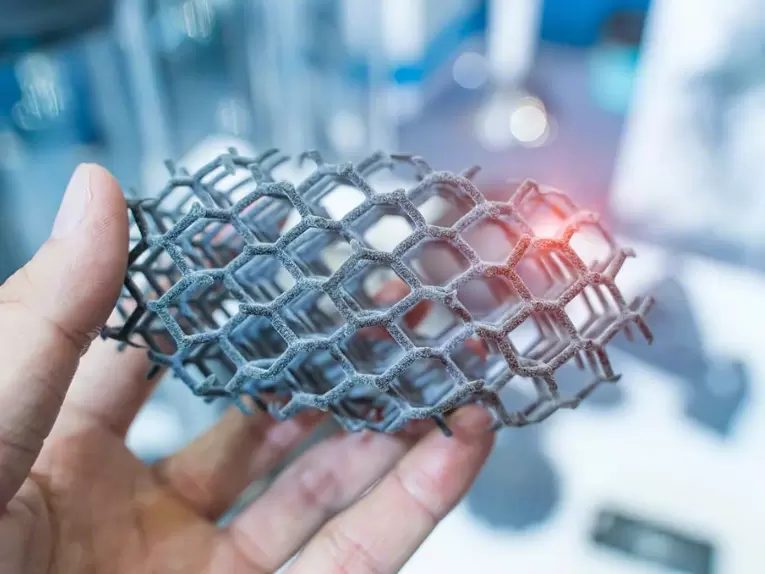Are 3D printing and additive manufacturing the same thing? Is 3D printing a subset of additive manufacturing? This article explores the relationship between 3D printing and additive manufacturing, discussing the common myths and misconceptions around these terms. We’ll also dive into the different types of additive manufacturing and their use cases.
Table of Content:
- Introduction: Additive Manufacturing and 3D Printing
- Are 3D Printing and Additive Manufacturing the Same?
- Is 3D Printing a Subset of Additive Manufacturing?
- Additive Manufacturing Process: What is it?
- Types of Additive Manufacturing Process
- Benefits of Additive Manufacturing
- 3D Printing and Additive Manufacturing: Common Myths
- Differences between 3D Printing, Additive Manufacturing, and Rapid Prototyping
- 3D Printing and Manufacturing
- Conclusion: The Future of Additive Manufacturing and Its Relationship with 3D Printing
Introduction: Additive Manufacturing and 3D Printing
Additive manufacturing (AM) is a process of creating a three-dimensional object by laying down successive layers of material until the object is created. 3D printing is the most known form of additive manufacturing. 3D printing is often regarded as a subset of additive manufacturing. However, there are several types of AM processes, and 3D printing is just one of them. This article will explore the relationship between 3D printing and additive manufacturing.
Are 3D Printing and Additive Manufacturing the Same?
3D printing and additive manufacturing (AM) are often used interchangeably, but they aren’t precisely the same thing. 3D printing is a type of additive manufacturing that lays down successive layers of material until the object is formed, whereas additive manufacturing encompasses a broader spectrum of processes. Hence, additive manufacturing is a broader term encompassing 3D printing as one of the AM processes.
Is 3D Printing a Subset of Additive Manufacturing?
Yes, 3D printing is considered a subset of additive manufacturing. Additive manufacturing is an umbrella term that encompasses all of the processes that build objects by adding layers and material together.
Additive Manufacturing Process: What is it?
Additive Manufacturing is an all-encompassing term for a process that builds objects by adding layers of materials on top of each other, rather than by cutting or subtracting materials like in traditional manufacturing. AM is a computer-controlled process that is more precise and dramatically reduces the waste of raw materials.
Types of Additive Manufacturing Process
There exist many types of additive manufacturing processes, and they differ in the way the material is deposited or cured, the materials that can be used, and the applications they serve. Some of the most common approaches to AM include Fused Deposition Modeling (FDM), Stereolithography (SLA), and Selective Laser Sintering (SLS).
Benefits of Additive Manufacturing
One of the most significant benefits of additive manufacturing is the ability to create complex geometries that would otherwise be impossible or challenging to reproduce with traditional methods such as injection molding, which is cheaper at high volumes but has limitations on the shapes can be produced. Additionally, AM creates less waste, leading to lower costs of raw materials over time.
3D Printing and Additive Manufacturing: Common Myths
There are some common myths and misconceptions regarding 3D printing and additive manufacturing. Some of the most frequent misconceptions include:
3D printing and additive manufacturing are the same things
3D printing is not suitable for industrial applications
Additive manufacturing is slow compared to traditional manufacturing methods.
Differences between 3D Printing, Additive Manufacturing, and Rapid Prototyping
Rapid prototyping and 3D printing are not the same things as additive manufacturing. Rapid prototyping aims to create an object as quickly and cheaply as possible, while additive manufacturing refers to the creation of a component using additive processes rather than subtractive processes.
3D Printing and Manufacturing
3D printing is a manufacturing process, but it is not an industrial process. Many industrial applications in aerospace, automotive, and medical industries incorporate 3D printing technologies.
Conclusion: The Future of Additive Manufacturing and its Relationship with 3D Printing
As technology continues to advance, the future of additive manufacturing is undoubtedly bright. 3D printing is just one of the many additive manufacturing processes. Additive manufacturing is beginning to integrate with traditional manufacturing processes like injection molding, and it is starting to make more significant impacts in industrial applications.
In conclusion, 3D printing is only one facet of additive manufacturing. Additive manufacturing comprises a wide range of manufacturing processes that differ by the types of materials used and manufacturing techniques employed, making it a broader concept than 3D printing.




